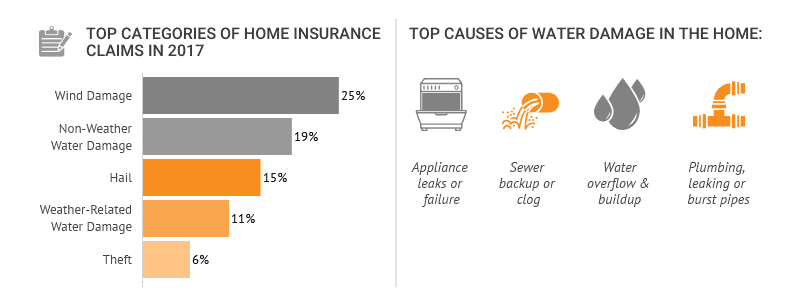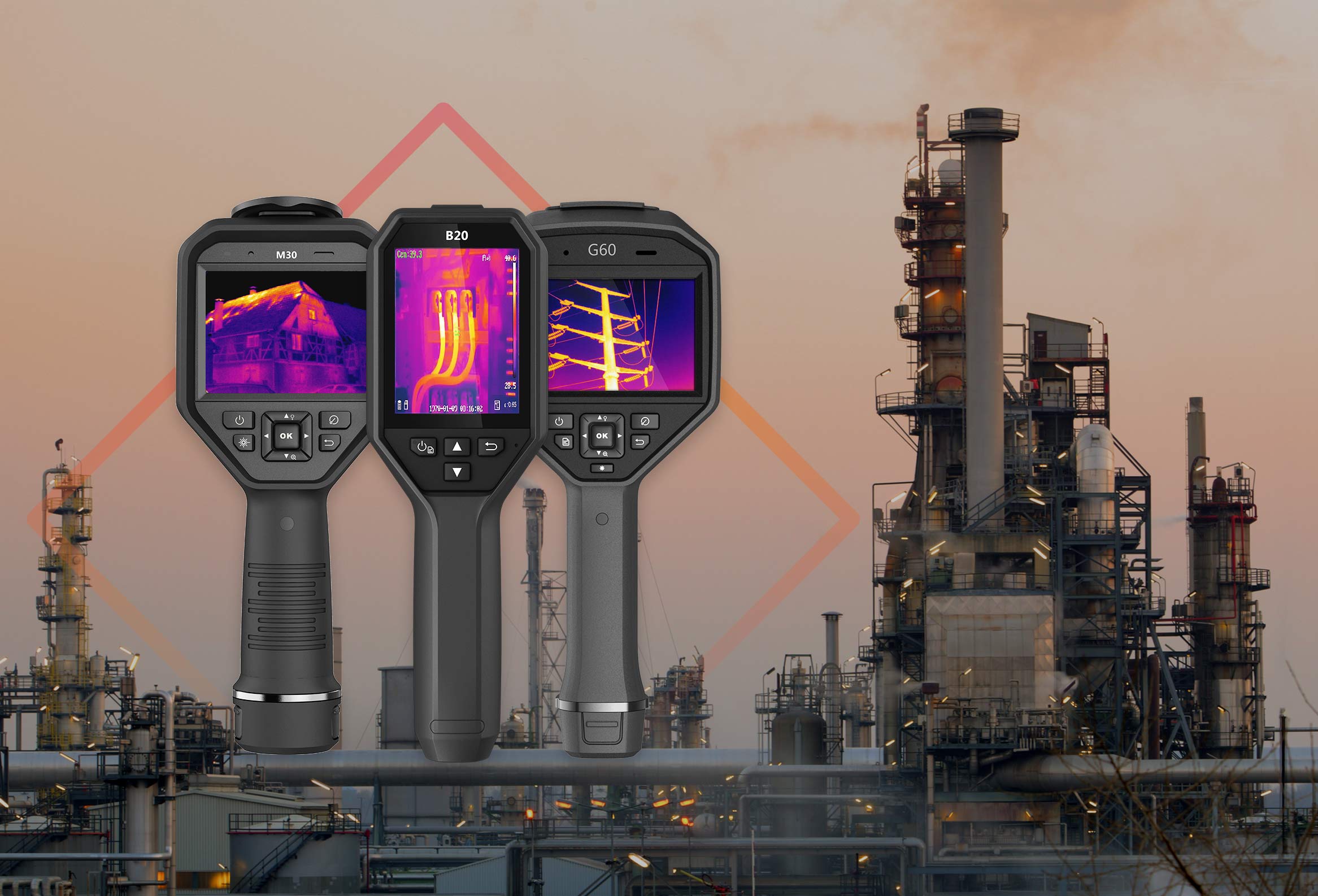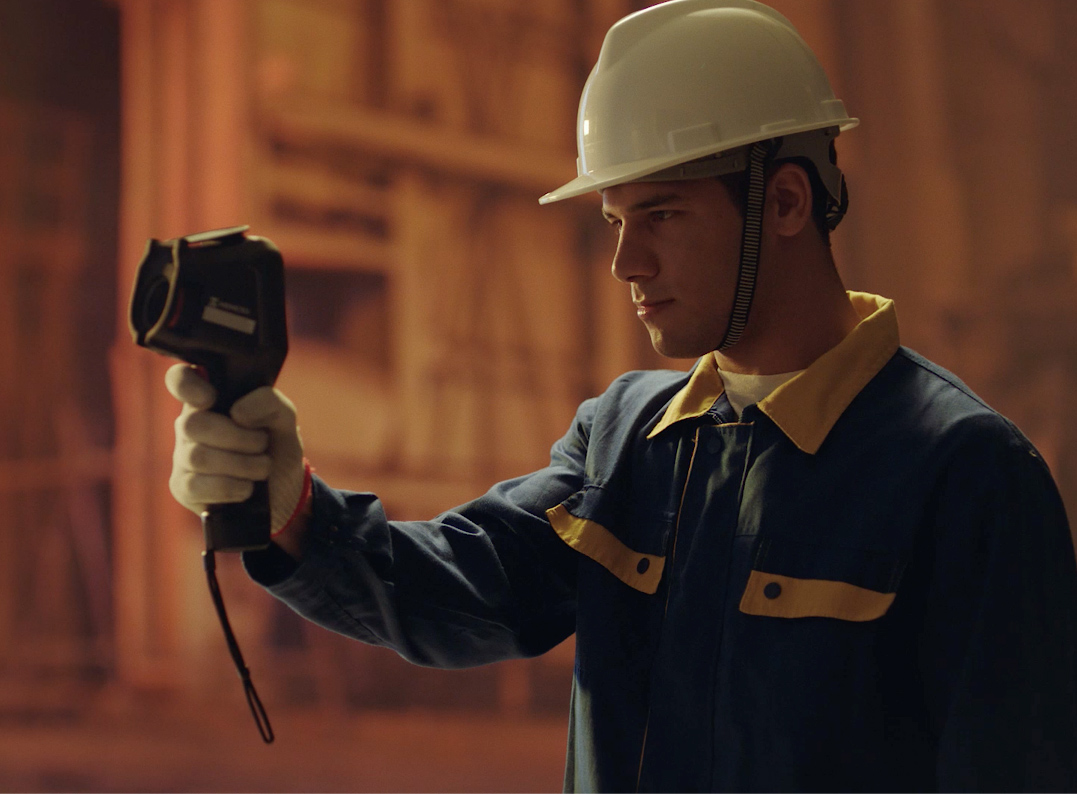Discover just a few of the applications for thermal cameras to diagnose otherwise invisible problems while revealing the best possible solutions.
Applications Where Thermal Imaging Is Useful
Water leaks of any size can lead to big problems, including damage to finishes, structural issues and health hazards. Contractors, builders and remodelers all know that finding a water leak can add up to countless hours of trial and error that deplete client confidence. However, with the right tools, water leaks can be tamed.
Common Water-Leak Sources
Water leaks can occur at any stage of construction. They can be a result of damage, deterioration or improper installation of building-envelope components, like windows and doors. Water leaks can also be caused by plumbing issues or thermal variances that create condensation or ponding.
Regardless of the source, water leaks often occur behind finished surfaces and out of sight. When they are revealed, the pressure to locate the source and minimize damage quickly is high, as the timeline for water leaks to create hazardous conditions is about 72 hours. Whether a building is occupied or nearing turnover, the rush to find and fix a water leak as quickly as possible becomes the top priority, and will likely result in pulling resources off other critical-path items.


Courtesy of iProperty Management
The Toll of Water Damage
In the US, the annual cost of water damage is around $13 billion. There are nearly 14,000 daily water-leak emergencies, and the resulting insurance claims average about $10,000. The damage costs correlate with the time frame between leak and discovery.
Even leaks that are found within hours can damage finished materials. Water leaks that are left for 24 hours can ruin cabinetry, increase humidity and start to create conditions for mildew and mold. A water leak that goes undiscovered for a few days can destroy wood floors and start to affect the structural elements of a building. Beyond a week, a water leak can create mold proliferation that requires full remediation or results in a loss of property to neglect.
If you’ve discovered a water leak but cannot find the source, the impact on client relationships can be extreme. In the instance of a new or remodeled building, where a client is ready and excited to turn the key, a water leak can cast a long shadow on the perceived value of the property. Maintaining positive client relationships, even when issues arise, should always be top priority as your current clients can potentially impact getting new business once their project is completed.
Finding Leaks With Thermal Imaging
Thermal cameras are gaining a permanent spot in the toolboxes of contractors and inspectors as a go-to diagnostic tool, and with good reason. Thermal imaging is a way to see thermal variances and assess conditions that would otherwise be hidden from the naked eye. Thermal cameras capture infrared radiation and use the information to create a visual display in which thermal variances are organized by shade or color on a screen. With color displays, colder temperatures are assigned blue and purple, and warmer temperatures displayed in red, orange or yellow.
Thermal imaging is particularly suited to finding water leaks, as it displays relative information. The thermal variances created by cooling water or other moisture differences can be viewed and analyzed to narrow in on the source of water leaks. This capability not only cuts down on the amount of time spent looking for a leak’s source, it also decreases the need to remove finished surfaces in the search, impacting your bottom line as little as possible.
Minimizes Damage and Repairs
The biggest benefit of thermal imaging is that it saves time; and with water leaks, time is the enemy. Today’s thermal cameras are durable handheld devices that can be quickly deployed to pinpoint a water leak. The cost of water damage can be devastating to a homeowner’s or builder’s budget. A thermal camera provides an affordable preventive measure that can help avoid costly damage and repair. For remediation work, a thermal camera such as the HIKMICRO B20 handheld can provide the needed resolution and sensitivity for an investment of around $500.
Builds Client Trust
The key element of long-term construction projects is the engagement and trust of clients. They determine whether the project is a success or not, and much of that is based on the process. With any construction project, there will always be unpredictable situations. Storms, supply chains, labor and just about everything else involved in construction is a variable.
The client’s confidence in their chosen team is built largely on the team’s problem-solving ability. With water leaks, thermal imaging allows team members to find and solve problems swiftly with accuracy. From a client’s standpoint, knowing that the problem has been located and is being resolved is highly preferable to seeing a team of contractors standing around ripped-out sheetrock scratching their heads.
Thermal Cameras: Readiness and Response
The make-or-break moments on construction projects can happen fast, and preparedness is key. The ability to quickly diagnose water leaks makes all the difference in project outcomes. Thermal cameras are an essential tool in the fight against water damage. Practical, cost-effective time-savers, handheld and portable devices put thermal-imaging technology on-site where it’s needed for preventive diagnostics. With water leaks, thermal cameras turn costly uncertainty into surety.
Sources
iProperty Management - Water Damage Statistics 2021
MarketWatch - Global Thermal Imaging Market Forecast


Hikmicrotech.com would like to use analytics cookies and other similar tracking technologies ("Cookies") to help us improve our website. The Cookies collect information in a way that does not directly identify anyone. For more information about the Cookies we use, see our cookies policy here.